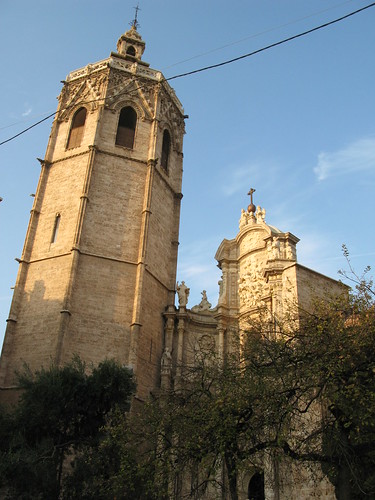Spain has been high on the UK tourist list for many years. Sun, sea and Sangria have long been the theme. If you are thinking about making a life for yourself and your family in Spain there will be plenty of reminders of home.

With Ryanair getting to Spain is faster than ever (and cheap) – source
The tourist invasion
When we ‘invaded’ Spain as tourists in the 1960s and 70s we took many of our familiar favourites with us. This is why you can find fish and chip shops, Chinese and Indian restaurants and English pubs over there. Typically then although we loved the sun, the temperatures and the cheap vino, we craved our ‘British’ food.
Ex-pat communities
Next it became a favourite retirement place. Consequently many communities of ex-pats grew up in popular resorts who got by with only a smattering of Spanish. The Brits who settled opened the English pubs and fish and chip shops so that others like them could enjoy the comforts of home … in the sun.
Making a life in Spain
For those wishing to work in Spain and make a life there now, immersion in the lifestyle and culture is recommended. Learning the language so that you aren’t restricted in either the jobs you can do or the company you keep is a great starting point.
Get a taste of Spain
Trying the Spanish cuisine is next in line so that you get a real ‘taste’ for the Spanish lifestyle. Some of the favourites which are good to start with include Tapas which is a selection of small dishes such as olives, cheese, shrimps, squid and chorizo. Others include Paella: most commonly a rice dish with chicken and seafood; Spanish omelette, Patatas Bravos – yes potatoes – or Gazpacho a chilled tomato soup.
Now that Spanish food is more readily available in restaurants and supermarkets over here this shouldn’t be difficult to accept.
Moving to Spain
As both the UK and Spain are part of the EU you are free to travel and work in Spain without requiring a work permit as long as you are a British citizen or a citizen of another EU country. You can stay for up to three months as a tourist. If you stay longer you must register and you will be given a certificate of residence. You must also show evidence that you can support yourself and evidence of healthcare insurance.
Keeping in touch with family and friends in the UK is easy. There are plenty of mobile networks that allow instant access but a cheaper and easy option is Skype where you can not only speak but see one another on your laptop or iPad screen.
There are many online sites that help you understand all the things you need to do or need to know to set up home in Spain. Check one of these out before you go to see what you need to do.
But at least there are now online sites to help your search for jobs in Spain and many which allow you to upload your CV so that it is available for prospective employers to read. The Internet has certainly helped to make it easier for people to be mobile.
By Harry Price
Harry Price is a free-lance writer who enjoys hiking, camping and playing poker with his mates. He has 3 wonderful dogs who run his life.




